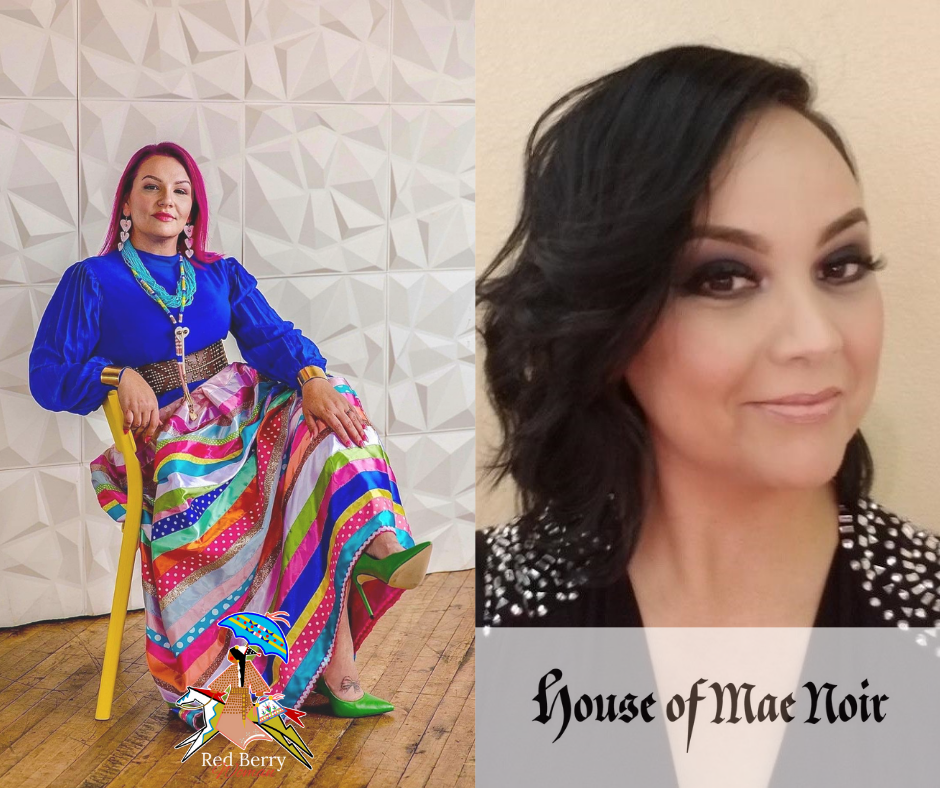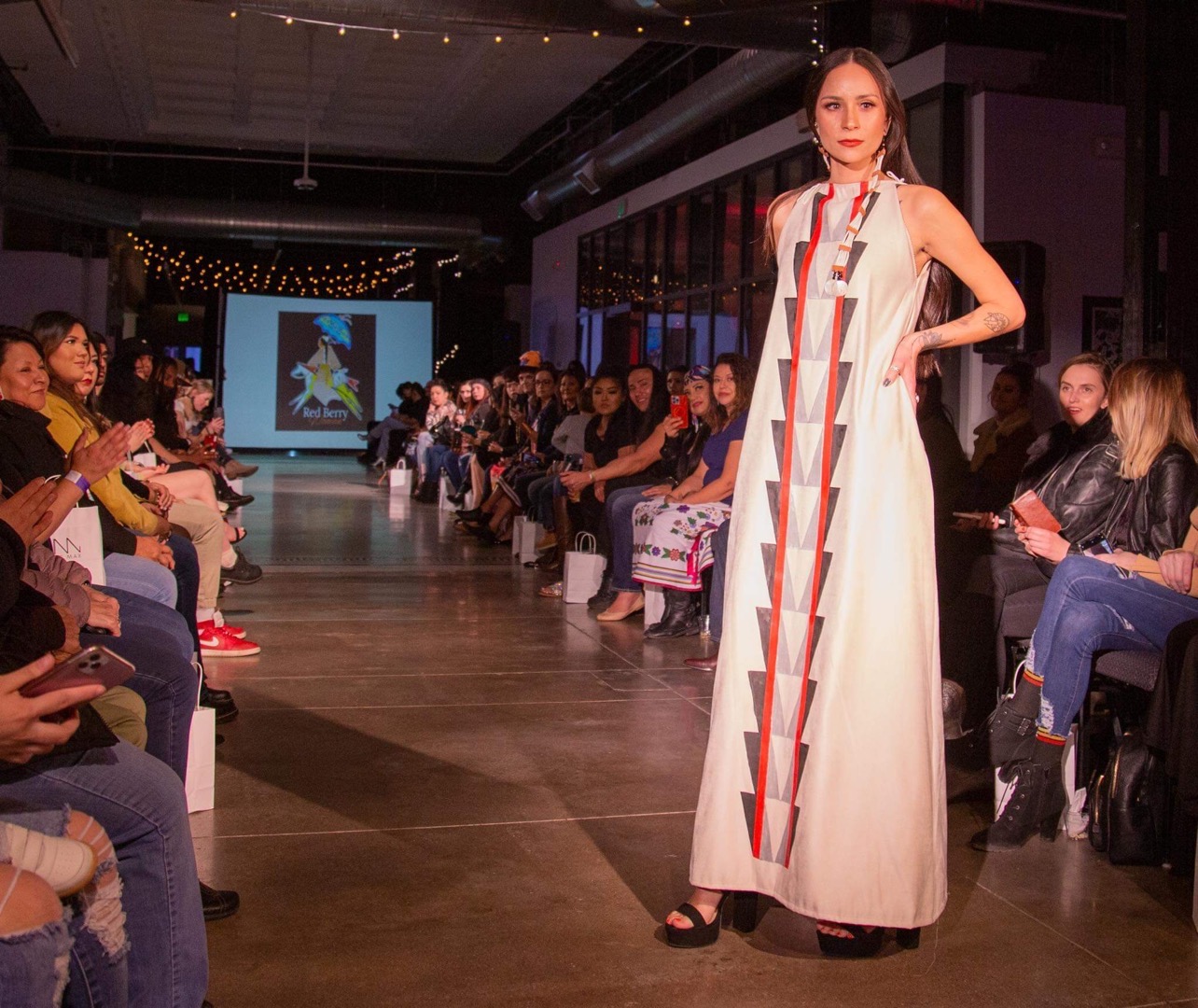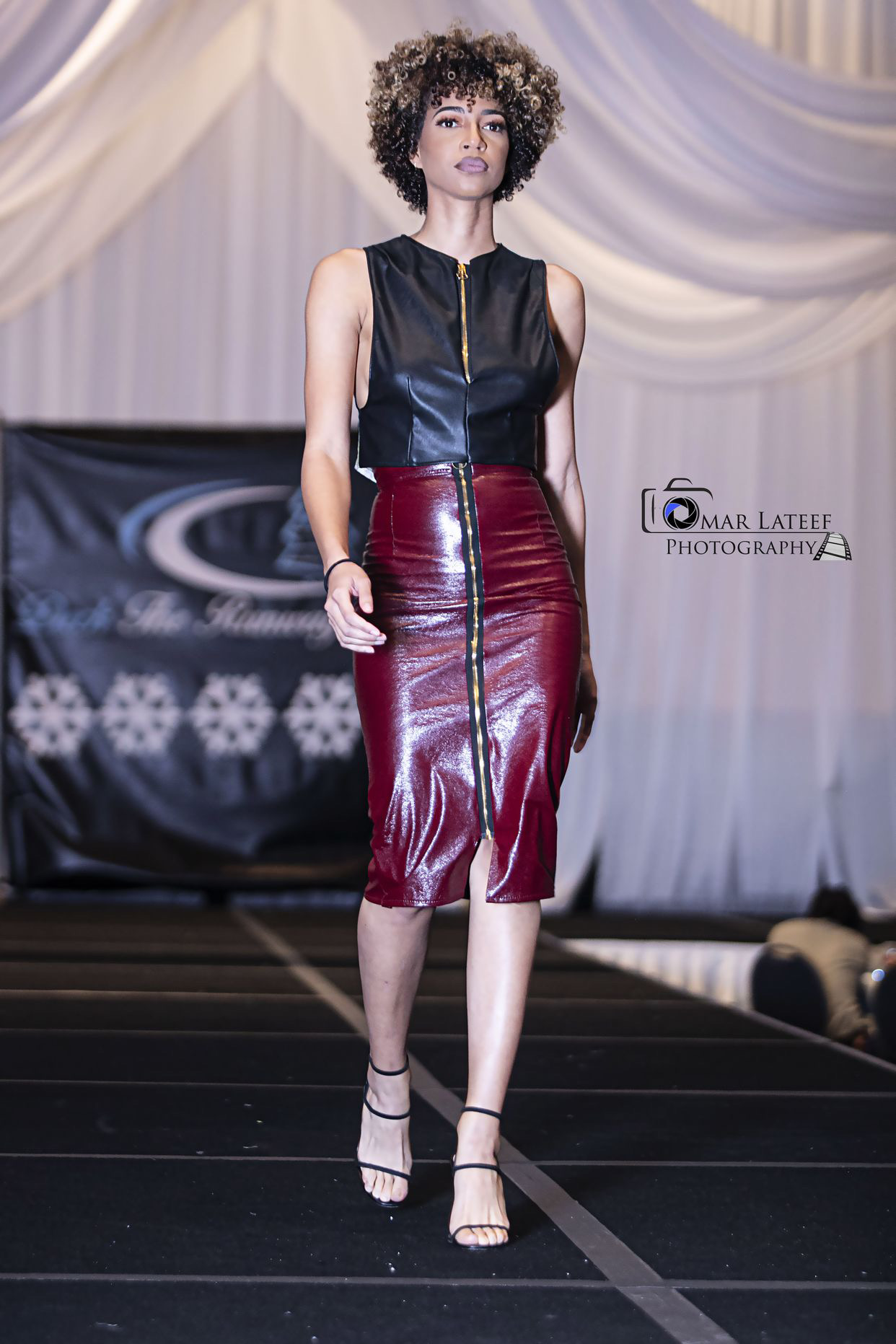
- Details
- By Darren Thompson
For the first time in its history, Phoenix Fashion Week features two Indigenous finalists for the Designer of the Year award: Norma Baker-Flying Horse of Red Berry Woman and Rita Zebell of House of Mae Noir.
Both designers went through a rigorous selection process that took months of preparation, submissions, interviews, and follow-up. The winner will be announced April 16.
“I’m excited, nervous, and feeling the pressure because the previous winner was an Indigenous designer,” Baker-Flying Horse told Native News Online. “I really have to step up my game and my work because although we are both Indigenous designers, we have different styles and it’s important for the organizers to see that.”
For Zebell, being selected as a finalist is an achievement that’s been on her radar for several years.
“It’s been a long time goal, and I am super excited,” Zebell told Native News Online. “I’m very happy to be chosen as one of the finalists for Designer of the Year.”
The two-day fashion event will showcase Spring and Summer 2022 collections with 20 designer runway shows April 15-16. Phoenix Fashion Week is considered the leading fashion industry event in the Southwest.
This year marks Phoenix Fashion Week’s first live event since the beginning of the Covid-19 pandemic.
Prior to the Covid-19 pandemic, Indigenous fashion designer Loren Aragon (Acoma Pueblo), who owns the ACONAV fashion brand, earned the Phoenix Fashion Week Designer of the Year award.
Baker-Flying Horse’s Red Berry Woman brand has established a reputation as a traditional and contemporary fashion line rooted in Native culture. An enrolled member of the Mandan, Hidatsa and Arikara Nation, her designs have graced the red carpet at the Grammy Awards and have been worn by former Mrs. Universe and current Sports Illustrated swimsuit model Ashley Callingbull (Cree). The brand has also been showcased at fashion shows from Paris to the United National Inter-Tribal Youth’s (UNITY) annual conference.

She takes pride in her heritage and craftsmanship and strives to showcase her work as having an educational component.
“One of the things I would like to see my business accomplish is to help break stereotypes that we’re all the same,” Baker-Flying Horse said. “The other is cultural appropriation. I want people to know … what not to appropriate from our traditional cultures.”

Zebell never thought she’d be featured as one of the designers for the prestigious fashion show, let alone for Designer of the Year. However, she recalls putting in the work and participating in Phoenix Fashion Week’s various programs, including its signature Designer Boot Camp.
Zebell predominantly uses leather that is organic, vegan and ethically sourced in her designs. She calls her own style “Pin-up Retro” style, and hopes to soon incorporate her Diné cultural designs into her clothing. This year marks her first full runway show at the Phoenix Fashion Show.
Each week, the Phoenix Fashion Week showcases its designers and their progress on its Instagram account, @phxfashionweek. Each designer is teamed with a team of industry experts that focus on a variety of skills within the industry from marketing to distribution.
More Stories Like This
A Native American Heritage Month Playlist You Can Listen to All Year Long11 Native Actors You Should Know
Five Native American Films You Should Watch This Thanksgiving Weekend
Heavy metal is healing teens on the Blackfeet Nation
Over 150 Tribal Museums Participate in Fourth Annual Celebration of Native Life
Help us tell the stories that could save Native languages and food traditions
At a critical moment for Indian Country, Native News Online is embarking on our most ambitious reporting project yet: "Cultivating Culture," a three-year investigation into two forces shaping Native community survival—food sovereignty and language revitalization.
The devastating impact of COVID-19 accelerated the loss of Native elders and with them, irreplaceable cultural knowledge. Yet across tribal communities, innovative leaders are fighting back, reclaiming traditional food systems and breathing new life into Native languages. These aren't just cultural preservation efforts—they're powerful pathways to community health, healing, and resilience.
Our dedicated reporting team will spend three years documenting these stories through on-the-ground reporting in 18 tribal communities, producing over 200 in-depth stories, 18 podcast episodes, and multimedia content that amplifies Indigenous voices. We'll show policymakers, funders, and allies how cultural restoration directly impacts physical and mental wellness while celebrating successful models of sovereignty and self-determination.
This isn't corporate media parachuting into Indian Country for a quick story. This is sustained, relationship-based journalism by Native reporters who understand these communities. It's "Warrior Journalism"—fearless reporting that serves the 5.5 million readers who depend on us for news that mainstream media often ignores.
We need your help right now. While we've secured partial funding, we're still $450,000 short of our three-year budget. Our immediate goal is $25,000 this month to keep this critical work moving forward—funding reporter salaries, travel to remote communities, photography, and the deep reporting these stories deserve.
Every dollar directly supports Indigenous journalists telling Indigenous stories. Whether it's $5 or $50, your contribution ensures these vital narratives of resilience, innovation, and hope don't disappear into silence.
 The stakes couldn't be higher. Native languages are being lost at an alarming rate. Food insecurity plagues many tribal communities. But solutions are emerging, and these stories need to be told.
The stakes couldn't be higher. Native languages are being lost at an alarming rate. Food insecurity plagues many tribal communities. But solutions are emerging, and these stories need to be told.
Support independent Native journalism. Fund the stories that matter.
Levi Rickert (Potawatomi), Editor & Publisher
